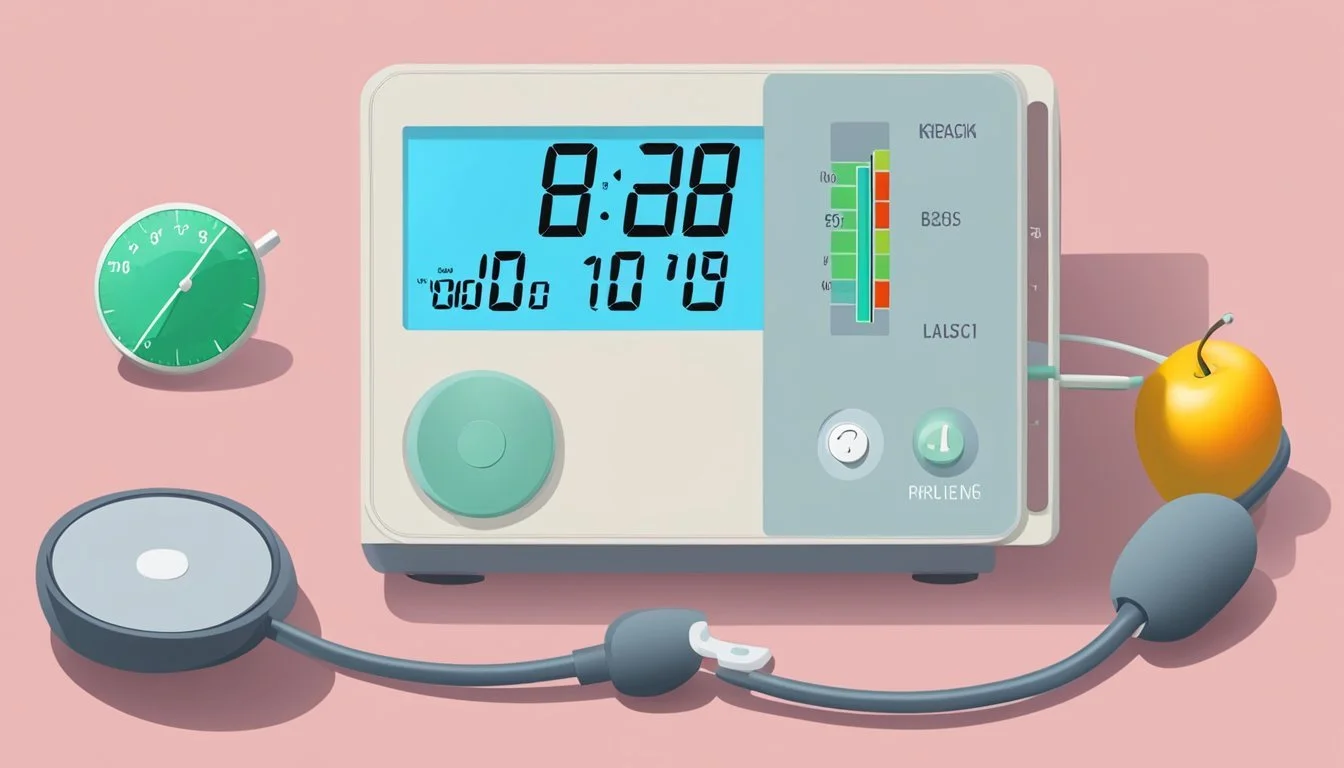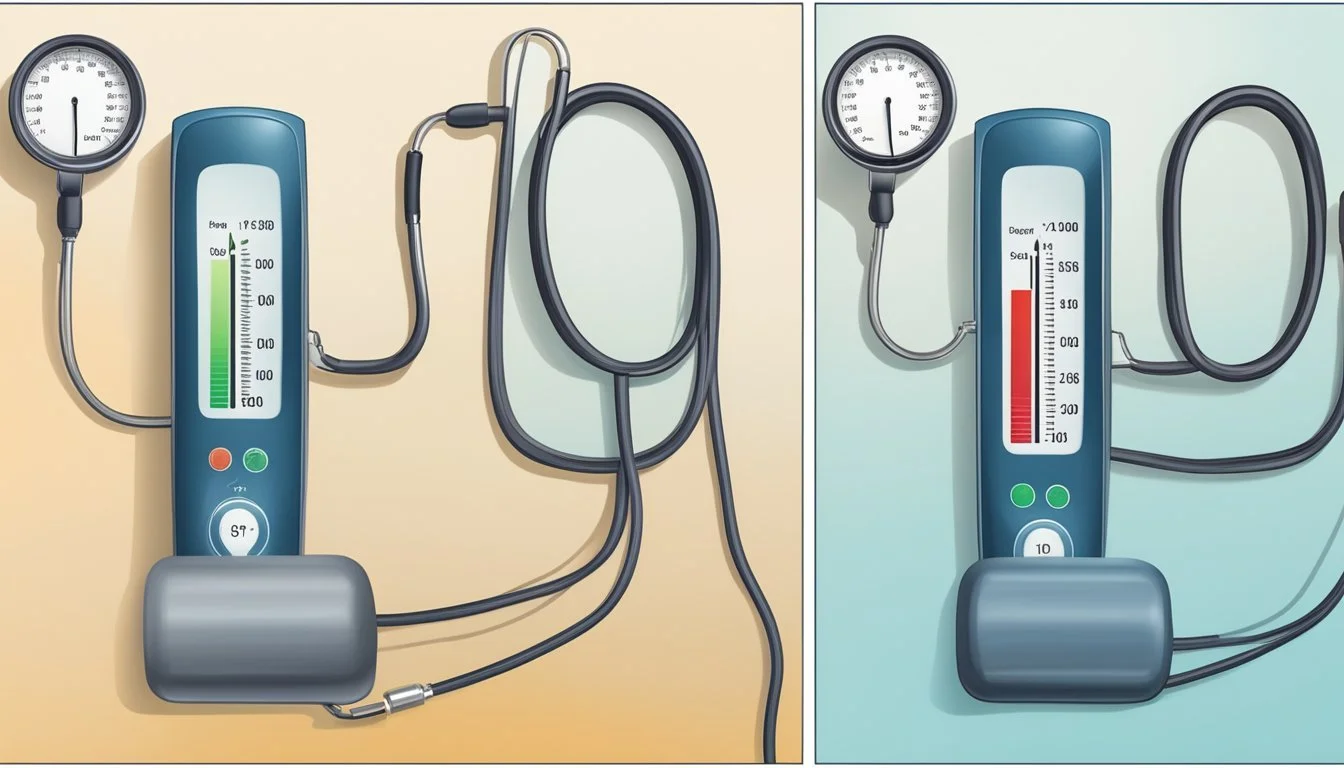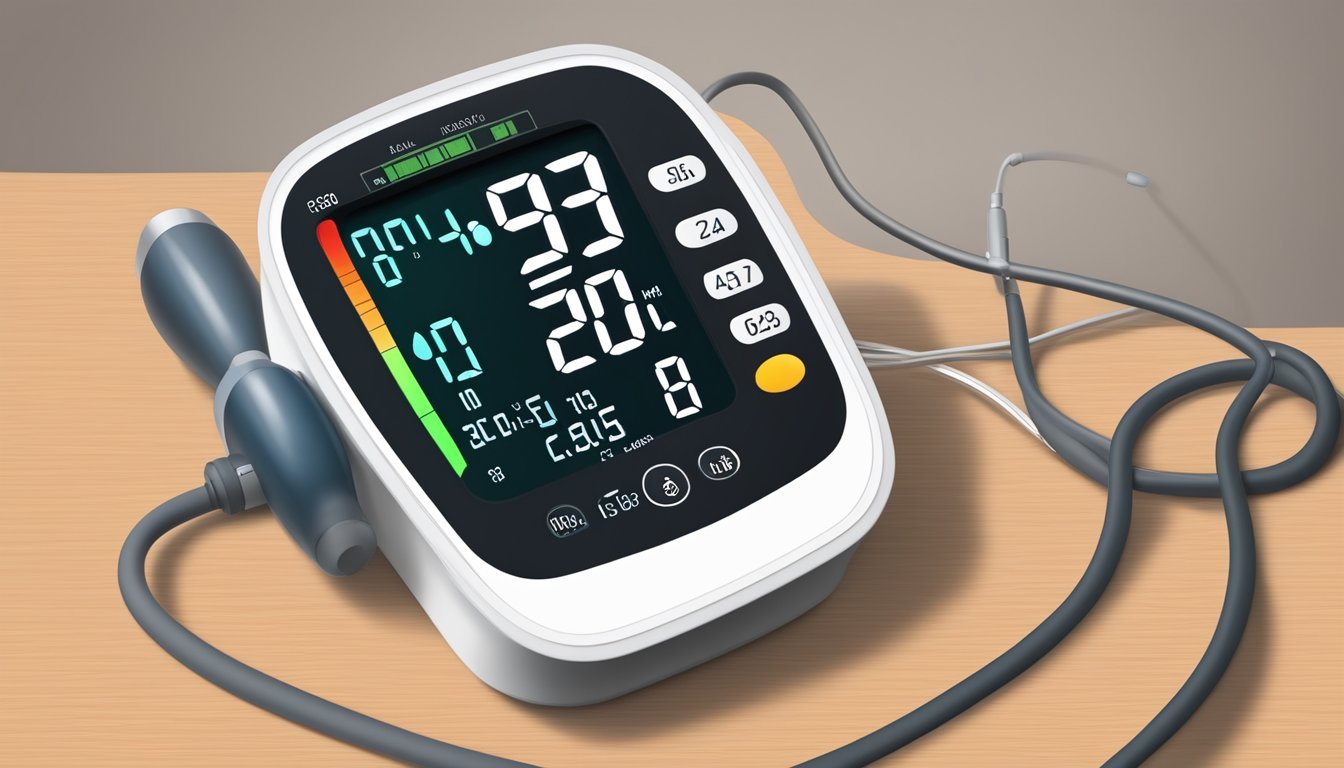How Does the South Beach Diet Affect Blood Pressure?
Unveiling the Health Impacts
The South Beach Diet, initially crafted by cardiologist Dr. Arthur Agatston, gears toward reducing the intake of bad carbohydrates and fats to promote weight loss and improve cardiovascular health. Its structured approach subdivides into phases, beginning with a restrictive period that kickstarts metabolism changes. Beyond weight management, the diet's implications on various health markers, particularly blood pressure, have garnered attention. Controlled carbohydrate intake, as advocated by the South Beach Diet, may influence blood pressure levels. Low-glycemic index foods, a cornerstone of the diet, aim to prevent spikes in blood glucose, which is conducive to both a stable appetite and potentially more stable blood pressure readings.
Studies indicate that weight loss can have a positive effect on hypertension, and diets that promote a healthy weight and include nutrient-rich foods can be beneficial in managing blood pressure. The South Beach Diet emphasizes the consumption of protein, high-fiber vegetables and fruits, and good fats—which aligns with the dietary recommendations for hypertension management. Reduced carbohydrate intake may reduce insulin spikes and aid in weight loss, thereby potentially improving blood pressure.
However, it is essential to consider individual health needs and consult with healthcare professionals before commencing any diet. The South Beach Diet's reduced carbohydrate approach may not be suitable for everyone, and its effects on blood pressure can vary based on an individual's overall health profile, adherence to the diet, and concurrent medical treatments or lifestyle choices that also impact cardiovascular health.
Understanding the South Beach Diet
The South Beach Diet, developed by cardiologist Arthur Agatston, is famed for its approach to promote better cardiovascular health through a modified low-carbohydrate diet. It strategically incorporates different phases to facilitate weight loss and maintenance.
Origins and Development
The South Beach Diet traces its roots to Miami, Florida, where Dr. Arthur Agatston, a prominent cardiologist, designed the regimen to help his patients improve their heart health. It emerged in the early 2000s as a response to the failure of low-fat diets prevalent at the time, aiming instead to balance the right fats and carbohydrates without strict calorie counting.
Core Principles and Goals
The diet's primary aim is to replace bad carbohydrates and fats with more healthful ones. The core principle is that by choosing the right carbs—those with a low glycemic index—you can prevent spikes in blood sugar that can lead to increased hunger and weight gain. It advocates for a balanced diet that's rich in nutrients and fiber, lean proteins, and healthful fats to improve heart health and facilitate weight loss.
Three Phases Explained
Phase 1: Lasting two weeks, this phase is designed to jumpstart weight loss by stabilizing blood sugar levels. During this period, one eliminates all sugars, processed carbohydrates, fruits, and higher-glycemic vegetables to curb cravings.
Foods to Avoid Foods to Include Sugars and sweets Lean proteins Alcohol Low-glycemic vegetables Breads, rice, potatoes and baked goods Nuts and seeds Fruit and fruit juices Legumes High-glycemic vegetables Eggs and cheese
Phase 2: This is a long-term weight loss phase where good carbs from fruits and whole grains are gradually reintroduced. The goal is to continue losing weight at a steady pace until achieving the target weight.
Reintroduced Foods:
Whole grains
Fruits
Good carbohydrates
Phase 3: The final phase is about maintenance. One learns to incorporate the principles of the South Beach Diet into a sustainable lifestyle. There are no strict food restrictions in this phase, but adherence to the diet's balanced approach to eating is vital for maintaining health and preventing weight gain.
Impact on Blood Pressure
The South Beach Diet impacts blood pressure by modifying dietary intake, focusing on healthy fats and reducing carbohydrate consumption, which can influence blood pressure regulation and cardiovascular health.
Mechanisms of Blood Pressure Regulation
Blood Pressure is chiefly governed by diet, physical activity, and body weight. Consuming healthy fats, particularly unsaturated fats, is beneficial for heart health and blood pressure management. The South Beach Diet emphasizes the intake of these fats. On the other hand, the diet is lower in carbohydrates than a typical diet. Since high carbohydrate intake, especially refined carbs, can lead to blood sugar spikes and increased blood pressure, the low-carb nature of the South Beach Diet may aid in maintaining a stable blood pressure.
Additionally, weight loss is associated with a decrease in blood pressure. By facilitating weight loss through a calorie-controlled diet that includes low-fat protein sources, reduced carbohydrate intake, and high-fiber foods, individuals on the South Beach Diet may experience a reduction in blood pressure.
Scientific Evidence
Scientific research suggests that diets low in carbohydrates and higher in unsaturated fats, like the South Beach Diet, could be effective in reducing blood pressure. Reduced hunger and lower blood glucose levels, as are typically reported by followers of the South Beach Diet, also correlate with better blood pressure control. Several studies have documented that weight loss, when established through a sustainable diet, is linked to decreased blood pressure. However, it is important for individuals to consult with healthcare providers before starting any new diet, especially those with underlying health conditions such as hypertension.
Dietary Components and Nutrition
The South Beach Diet emphasizes the importance of selecting high-quality macronutrients and the intake of specific micronutrients for overall health which indirectly can affect blood pressure levels.
Fats and Cholesterol
The South Beach Diet focuses on the intake of unsaturated fats, which are found in foods such as avocado, olive oil, and nuts. This diet advocates for a reduction in the consumption of saturated and trans fats, which are often associated with higher cholesterol levels, a risk factor for hypertension. Lean proteins such as chicken and fatty fish that are rich in omega-3 fatty acids are recommended.
Proteins and Carbohydrates
Protein sources in the South Beach Diet consist of lean proteins including fish, chicken, turkey, and soy products. These proteins are essential for maintaining muscle mass and metabolic functions. Carbohydrates are carefully chosen; the focus is on low-glycemic index foods, which have a minimal impact on blood sugar levels. Whole grains and certain fruits, which are digested slowly, help maintain consistent blood sugar and insulin levels.
Fiber and Nutrient Intake
A high fiber intake is encouraged through a variety of vegetables, whole grains, and some fruits. This not only aids in digestion but also contributes to sustained satiety, which can help with weight management. Additionally, ample fiber and a variety of vegetables increase the intake of essential nutrients and electrolytes, like potassium, which is vital for maintaining healthy blood pressure levels.
Health Benefits and Risks
The South Beach Diet is associated with certain health benefits and risks, particularly in terms of blood pressure. It emphasizes reduced carbohydrate intake and potential weight loss, which may affect heart health and blood sugar regulation.
Managing Weight and Metabolism
The South Beach Diet aims to enhance weight loss and metabolism. In its initial phase, the diet restricts high-glycemic carbohydrates, which can lead to a reduction in overall calorie intake and a subsequent drop in body weight. Weight loss has been identified as a key factor in lowering blood pressure. The diet's low-glycemic approach targets stable blood sugar levels, which can aid in metabolism regulation.
Heart Disease and Diabetes
Individuals following the South Beach Diet may experience lower blood pressure, blood glucose, and triglycerides, all of which are beneficial factors in reducing the risk of heart disease and diabetes. With a recommended daily saturated fat intake within 10-15% of total calories, the diet aligns with heart health guidelines. However, it's essential that followers monitor the changes in cholesterol levels, as the diet includes various sources of protein that might impact heart health if consumed excessively.
Diet Sustainability and Maintenance
The South Beach Diet progresses into a maintenance phase, aimed at sustaining long-term health benefits. This phase allows for a wider range of food options to support a more sustainable eating pattern. Effectively maintaining the dietary practices can contribute to long-term health outcomes, though individual experiences with the diet's sustainability can vary. It's critical for individuals to assess the diet's long-term feasibility for their lifestyle to ensure ongoing health results.
Diet Phases and Food Choices
The South Beach Diet is structured around three phases, each with specific food choices intended to manage blood pressure and promote weight loss. Limitation and reintroduction of certain food groups are key strategies throughout these phases.
Phase-Specific Foods
Phase 1 is the most restrictive period, spanning 14 days. It focuses on stabilizing blood sugar levels and includes:
Lean Proteins: such as chicken, turkey, fish, and eggs
Vegetables: a wide variety, excluding those high in carbohydrates
Legumes: small portions are allowed
Nuts and Seeds: moderate amounts
Oils: Particularly olive oil for its heart-healthy fats
Bread and pasta are notably absent during this initial phase.
Phase 2 gradually reintroduces some of the foods that were restricted in Phase 1, continuing until the individual reaches their target weight. One can start including:
Whole Grains: such as whole-grain bread and pasta in moderation
Fruits: reintroduced carefully to avoid blood sugar spikes
Selective Dairy: includes reduced-fat cheeses and milk
Weight loss is expected to occur at a more gradual pace during Phase 2, generally 1 to 2 pounds per week.
Phase 3 is the maintenance phase, intended to be a lifelong approach to healthy eating. No foods are officially off-limits, but the focus remains on lean proteins, whole grains, and heart-healthy fats.
Recommendations for Snacking
Snacks are an active component of the South Beach Diet, advised to prevent hunger pangs and sustain energy levels. Each phase allows for:
Phase 1: Snacks such as sliced vegetables with hummus, or a small portion of nuts
Phase 2 and 3: Snacks might include a piece of fruit, a few whole-grain crackers, or a dairy product, aligning with the reintroduction guidelines
Alcohol and Beverage Consumption
Alcohol is restricted during Phase 1 due to its negative effect on blood sugar control. In Phases 2 and 3, moderate alcohol consumption is allowed, though choices should be made wisely:
Suitable options include light beer, wine, and spirits without sugary mixers
Beverages across all phases should avoid added sugars, aligning with maintaining stable blood pressure and weight management efforts
Managing Cravings and Hunger
When following the South Beach Diet, managing cravings and hunger is essential for maintaining lower blood pressure. This involves understanding the nature of cravings and implementing hunger control strategies that focus on scheduled eating and nutrient-rich foods for sustained energy.
Understanding and Overcoming Cravings
Cravings can be a major barrier to any diet plan, often leading to overeating and poor food choices that can adversely affect blood pressure. The South Beach Diet aims to overcome sugar cravings by cutting out high-glycemic carbohydrates that can cause blood sugar levels to spike and plummet, creating a cycle of cravings. Instead, the diet encourages consumption of foods low in refined sugars during the initial phase to stabilize blood sugar and reduce the urge for sweet treats.
Hunger Control Strategies
To control hunger, the South Beach Diet recommends a regular eating schedule with meals and snacks that include protein, fiber, and healthy fats. These nutrients help create a sense of fullness and can keep hunger at bay, which supports blood pressure management by preventing overeating and possible hypertension associated with excessive weight.
Protein: Food items like lean meats and fish provide prolonged energy without impact on blood sugar levels.
Fiber: High-fiber vegetables and whole grains digest slowly, ensuring long-term satiety.
Healthy Fats: Sources such as avocado and nuts not only help with feeling full but also contribute to overall heart health.
Inclusion of these food groups in controlled portions is critical for keeping hunger in check and diminishing cravings, leading to better adherence to the diet and potential improvements in blood pressure.
Exercise and the South Beach Diet
The South Beach Diet emphasizes not only the importance of healthy eating but also the role of exercise in maintaining weight and overall health. Engaging in regular physical activity while following the diet enhances energy levels and metabolism, aiding in weight loss and cardiovascular health maintenance.
Role of Physical Activity
Exercise is a core component of the South Beach Diet and profoundly influences blood pressure regulation. Physical activity helps to lower blood pressure by improving heart health and increasing circulation. For individuals aiming for weight maintenance or losing weight, integrating exercise into their routine can accelerate fat burn and boost the efficiency of their metabolism.
Exercise Recommendations
The South Beach Diet advocates for consistent, moderate-intensity exercise to complement its nutritional guidelines. The key recommendations include:
Duration: Aim for at least 30 minutes on most days of the week.
Type: Moderate-intensity activities, such as brisk walking or cycling, are suggested.
Consistency: Regular exercise should be a habitual part of one's lifestyle for sustained energy levels and metabolic benefits.
By consistently including exercise in one's regimen, they can expect to see improvements in energy, metabolism, and the effectiveness of the South Beach Diet for weight maintenance and losing weight.
Pros and Cons
The South Beach Diet affects blood pressure favorably in many individuals due to its emphasis on nutrient-dense and low glycemic index foods, which promotes moderate weight loss while potentially lowering blood pressure. Unlike a Keto or Atkins Diet, which focuses on very low carbohydrate intake, the South Beach Diet allows for a wider variety of food choices, making it less restrictive and more sustainable for some people.
Pros:
Weight Loss: Initial rapid weight loss can motivate users to continue with the diet.
Nutrient-Dense Foods: Emphasis on fruits, vegetables, and whole grains can lead to improved overall health.
Unsaturated Fats: Encourages the consumption of healthy fats, potentially leading to lower blood pressure.
Education: Teaches about the importance of controlling portions, reading food labels, and choosing healthy fats.
Cons:
Restrictive Phase 1: The first phase is quite strict, limiting grains and fruits, which might be challenging to sustain.
Saturated Fat: Certain permitted foods are high in saturated fats, which may not be beneficial for heart health.
Calories: Potential miscalculation of calories could hinder weight loss progress.
Comparisons to DASH Diet: Lacks the robust evidence supporting the blood pressure-lowering effects of diets like the DASH Diet.
In conclusion, while the South Beach Diet offers several benefits that could lead to weight loss and potentially lower blood pressure, one must be cognizant of the potential drawbacks, such as its initial restrictiveness and the inclusion of high saturated fat foods. Individuals should consult healthcare providers before starting any diet to ensure it aligns with their health needs and goals.
Conclusion
The South Beach Diet, designed primarily for weight management and heart disease prevention, can have a noticeable influence on an individual's blood pressure. Through its phased approach, it shifts eating patterns towards healthier, lower-carbohydrate options.
Phase Impact:
Phase 1: Initiates a stricter eating regime which can lead to a decrease in blood pressure as a result of rapid weight loss.
Phase 2 and 3: Introduce more varied foods while aiming for a gradual and sustainable weight loss.
Blood Pressure Changes:
The diet's emphasis on low-glycemic index foods and lean protein sources can contribute to overall cardiovascular health.
Positive changes in blood pressure may be observed due to reduced sodium intake and a balanced consumption of nutritious foods.
The diet's impact on heart disease is intertwined with the management of blood pressure. A healthier blood pressure level decreases the risk of heart disease and strokes.
Lifestyle Integration:
Physical Activity: Essential for overall cardiovascular health and aids in maintaining optimal blood pressure levels.
Stress Management: Indirectly beneficial to blood pressure control.
In conclusion, the South Beach Diet can be a beneficial lifestyle choice for individuals seeking to manage their blood pressure while also reducing the risk of heart disease. However, the implications for an individual's health can vary, and it is recommended that they consult healthcare professionals before making significant dietary changes.






